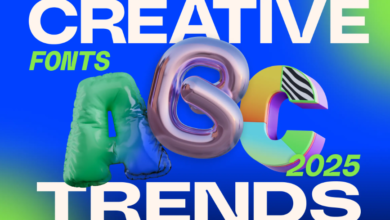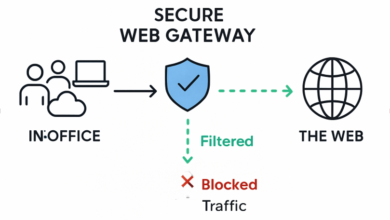Mastering CSS: The Ultimate Guide to Styling Web Pages

Cascading Style Sheets (CSS) is a cornerstone technology of the web, alongside HTML and JavaScript. It is primarily used to control the presentation of web pages, allowing developers to separate content from design. This separation is crucial because it enables easier maintenance and a more efficient workflow.
CSS provides a wide array of styling options, from colors and fonts to layouts and animations, making it an essential tool for web developers and designers alike. The syntax of CSS is relatively straightforward, consisting of selectors and declarations. A selector targets an HTML element, while a declaration block contains one or more property-value pairs that define how the selected element should be styled.
The cascading nature of CSS means that styles can be applied in a hierarchical manner, allowing for flexibility and control over how styles are inherited and overridden. This cascading effect is influenced by the order in which styles are defined, the specificity of selectors, and the use of important rules. Understanding these foundational concepts is vital for anyone looking to create visually appealing and well-structured web pages.
As web standards evolve, CSS continues to grow, introducing new features such as Flexbox and Grid layout systems, which further enhance its capabilities in creating responsive and dynamic designs.
Selectors and Specificity in CSS
Selectors are the backbone of CSS, enabling developers to target specific HTML elements for styling. There are various types of selectors, including element selectors, class selectors, ID selectors, and attribute selectors. Element selectors target HTML tags directly, such as `p` for paragraphs or `h1` for headings.
Class selectors, denoted by a period (.), allow for styling multiple elements with the same class name, while ID selectors, marked by a hash (#), are used for unique elements on a page. Attribute selectors provide a way to select elements based on their attributes, such as `[type=”text”]` for input fields. Specificity is a critical concept in CSS that determines which styles are applied when multiple rules could apply to the same element.
It is calculated based on the types of selectors used: inline styles have the highest specificity, followed by IDs, classes, and finally element selectors. For example, if an element has both a class and an ID applied, the styles defined by the ID will take precedence over those defined by the class due to its higher specificity. Understanding how specificity works is essential for managing conflicts in styles and ensuring that the intended design is rendered correctly across different browsers.
Working with CSS Box Model
The CSS box model is a fundamental concept that describes how elements are structured on a web page. Every element on a page is represented as a rectangular box that consists of four main components: content, padding, border, and margin. The content area is where text and images appear, while padding creates space between the content and the border surrounding it.
The border itself can be styled with various properties such as width, color, and style. Finally, the margin creates space between the element’s border and adjacent elements. Understanding the box model is crucial for effective layout design.
For instance, when a web designer is setting dimensions for an element using width and height properties, it’s important to consider how padding and borders will affect the overall size of the box. By default, the width and height properties apply only to the content area; however, this can be altered using the `box-sizing` property. Setting `box-sizing: border-box;` ensures that padding and borders are included in the total width and height calculations, simplifying layout management.
Mastery of the box model allows developers to create precise layouts and avoid common pitfalls related to spacing and alignment.
Mastering Layout and Positioning with CSS
CSS offers several techniques for layout and positioning that enable developers to create complex designs with ease. Traditional methods include using floats and positioning properties like `absolute`, `relative`, `fixed`, and `sticky`. Floats were once a popular way to create multi-column layouts but have largely been replaced by more modern approaches due to their limitations in handling responsive designs.
Flexbox is one of the most powerful layout models introduced in CSS3. It allows for flexible arrangements of items within a container, making it easier to align elements both horizontally and vertically. With properties like `justify-content`, `align-items`, and `flex-direction`, developers can create responsive layouts that adapt seamlessly to different screen sizes.
Similarly, CSS Grid provides a two-dimensional layout system that enables developers to define rows and columns explicitly. This approach allows for more complex layouts without relying on hacks or excessive markup.
Styling Text and Fonts with CSS
Text styling is a crucial aspect of web design that significantly impacts readability and user experience. CSS provides a variety of properties to control text appearance, including `font-family`, `font-size`, `font-weight`, `line-height`, and `text-align`. The `font-family` property allows developers to specify custom fonts or fallbacks in case a particular font is unavailable.
Google Fonts has become a popular resource for integrating web fonts into projects easily. In addition to basic text styling, CSS also offers advanced typographic features such as text shadows, letter spacing, and word spacing. The `text-shadow` property can add depth to text by creating a shadow effect behind it, enhancing visual appeal.
Furthermore, responsive typography can be achieved using relative units like `em` or `rem`, which scale based on the user’s default font size settings. This approach ensures that text remains legible across various devices and screen resolutions.
Using CSS for Responsive Web Design
Responsive web design (RWD) is an essential practice in modern web development that ensures websites function well on various devices, from desktops to smartphones. CSS plays a pivotal role in achieving responsiveness through techniques such as media queries, flexible grids, and fluid images. Media queries allow developers to apply different styles based on device characteristics like screen width or orientation.
For example, a media query can change the layout from a multi-column format on larger screens to a single-column format on mobile devices. Flexible grids are another key component of responsive design. By using percentage-based widths instead of fixed pixel values, elements can resize proportionally as the viewport changes.
This adaptability ensures that content remains accessible without requiring horizontal scrolling on smaller screens. Additionally, images can be made responsive using the `max-width: 100%;` rule, which ensures that images scale down within their containing elements while maintaining their aspect ratio.
Advanced CSS Techniques and Best Practices
As web design evolves, so do the techniques used to create visually stunning responsive design websites. Advanced CSS techniques include animations and transitions that enhance user interaction without relying on JavaScript. The `transition` property allows developers to define smooth changes between different states of an element, such as hover effects or focus states.
For instance, changing the background color of a button can be animated over a specified duration to create an engaging user experience. CSS preprocessors like SASS or LESS have also gained popularity among developers for their ability to streamline CSS writing through features like variables, nesting, and mixins. These tools allow for more organized code management and promote reusability across stylesheets.
Best practices in CSS development include maintaining a consistent naming convention (such as BEM – Block Element Modifier), organizing styles logically within files, and minimizing specificity conflicts by keeping selectors simple.
Troubleshooting and Debugging CSS Issues
Despite its power and flexibility, working with CSS can sometimes lead to frustrating issues that require troubleshooting skills. Common problems include layout shifts due to margin collapsing or unexpected behavior from floats or positioning properties. One effective method for debugging CSS issues is using browser developer tools, which allow developers to inspect elements directly on the page.
These tools provide insights into computed styles, box model dimensions, and applied rules, making it easier to identify conflicts or overrides. Another common issue arises from browser compatibility; not all browsers interpret CSS in the same way. Utilizing tools like Autoprefixer can help ensure that styles are compatible across different browsers by automatically adding vendor prefixes where necessary.
Additionally, validating CSS code through services like W3C’s CSS Validation Service can help catch syntax errors or deprecated properties that may cause rendering issues. By mastering these aspects of CSS—from understanding its basics to troubleshooting complex issues—developers can create robust web applications that deliver exceptional user experiences across all devices.




